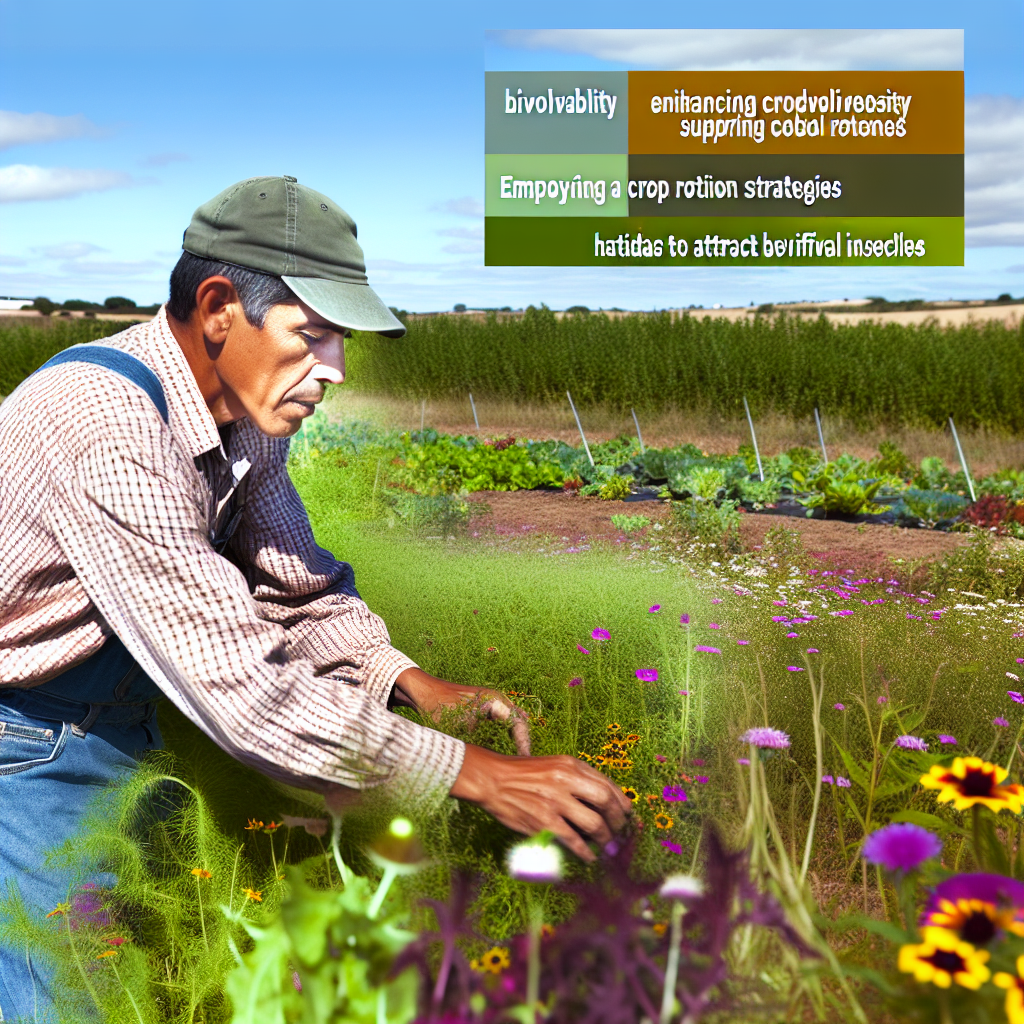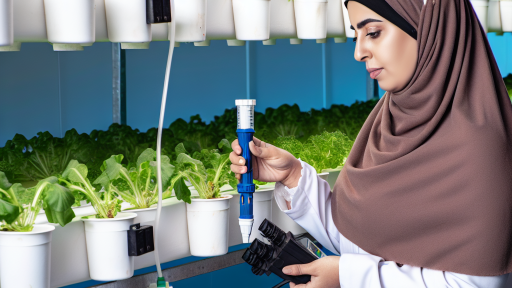The Importance of Biodiversity in Organic Farming
Benefits to Ecosystems
Biodiversity enhances ecosystem stability and resilience.
A diverse range of species contributes to healthier ecosystems.
Healthy ecosystems provide essential services, such as pollination.
These services benefit crops and improve yields.
Additionally, diverse farms attract beneficial insects and wildlife.
This natural pest control reduces reliance on chemical pesticides.
Furthermore, biodiversity protects against soil degradation.
It promotes soil health through various plant root structures.
Thus, organic farms with rich biodiversity thrive over the long term.
Enhancing Crop Resilience
Diverse crop varieties improve resilience to environmental stressors.
These include drought, pests, and disease outbreaks.
More genetic diversity means better survival rates under stress.
Organic farmers can select varieties suited to their local conditions.
This adaptability enhances overall agricultural productivity.
Moreover, crop diversity allows for diverse nutrient management strategies.
Transform Your Agribusiness
Unlock your farm's potential with expert advice tailored to your needs. Get actionable steps that drive real results.
Get StartedBy rotating crops, farmers can maintain soil fertility naturally.
This method reduces dependence on synthetic fertilizers.
In turn, it helps to promote ecological balance on the farm.
Promoting Community and Biological Interactions
Biodiverse organic farms encourage interactions among species.
These interactions support a balanced food web.
Consequently, they foster healthier plant and animal populations.
Additionally, vibrant communities maintain robust ecosystems.
In organic systems, plants and animals coexist and thrive together.
This relationship fosters mutual benefits, enhancing farm productivity.
Farms can benefit from natural nutrient cycles and pest regulation.
Resultantly, they reduce environmental impacts significantly.
Such systems contribute to sustainable agricultural practices.
Strategies for Increasing Plant Diversity
Cover Crops
Cover crops play a vital role in enhancing biodiversity.
They improve soil structure and prevent erosion.
Additionally, they can suppress weeds effectively.
Popular options include clover, vetch, and rye.
Planting these crops during fallow periods enriches the soil.
Moreover, cover crops can provide habitats for beneficial insects.
Farmers like Emily Turner utilize cover crops successfully.
These practices can lead to increased crop yields.
Companion Planting Techniques
Companion planting encourages beneficial plant relationships.
This method optimizes use of available space and resources.
For instance, tomatoes and basil grow well together.
They enhance each other’s flavor and deter pests.
Showcase Your Farming Business
Publish your professional farming services profile on our blog for a one-time fee of $200 and reach a dedicated audience of farmers and agribusiness owners.
Publish Your ProfileSimilarly, beans fix nitrogen, benefiting nearby crops.
Farmers often observe reduced pest populations with this technique.
Additionally, it supports pollinator health in the ecosystem.
Organizations like the Organic Farming Association provide useful resources.
Diversity in Planting Configuration
Using diverse planting configurations enhances biodiversity further.
Intercropping is one effective strategy.
This involves growing two or more crops in proximity.
Such configurations can optimize resource utilization.
Agroforestry systems also help integrate trees with crops.
These systems create microclimates that support various species.
Furthermore, dense plantings can improve resilience against pests.
Farmers like Carlos Mendoza use intercropping successfully.
Monitoring and Adapting Practices
Regular monitoring provides insights into biodiversity impacts.
This helps farmers adapt practices based on observations.
Using tools like soil tests can guide plant selection.
Farmers can assess which crops thrive best together.
Moreover, engaging with local agricultural extension services can offer valuable support.
Continuous learning keeps farm practices up-to-date.
Ultimately, adaptability promotes ecological health on farms.
Enhancing Soil Biodiversity
Practices for Building Healthy Soils through Organic Amendments
Soil biodiversity is essential for healthy farm ecosystems.
It supports plant growth and pest regulation.
Farmers can improve soil health by implementing organic amendments.
These amendments include compost, manure, and cover crops.
Utilizing Compost
Compost enhances soil structure and fertility.
It provides nutrients and retains moisture effectively.
Farmers can create compost from kitchen waste and green materials.
This practice reduces waste and enriches soil.
Regularly applying compost improves microbial activity.
Applying Manure
Animal manure is another valuable organic amendment.
This rich resource adds nutrients to the soil and enhances biodiversity.
Farmers should use well-aged manure to minimize pathogens.
Proper application prevents nutrient runoff into waterways.
Incorporating Cover Crops
Cover crops play a crucial role in soil health.
They prevent erosion and improve soil structure.
These plants also enhance nutrient cycling and weed suppression.
Farmers should select legumes to fix nitrogen in the soil.
This practice boosts soil fertility and biodiversity.
Monitoring Soil Health
Farmers must regularly monitor soil health to assess their practices.
Utilizing soil tests reveals nutrient levels and pH balance.
These insights help farmers make informed decisions.
Showcase Your Farming Business
Publish your professional farming services profile on our blog for a one-time fee of $200 and reach a dedicated audience of farmers and agribusiness owners.
Publish Your ProfileAdjusting practices based on soil health data fosters improvements.
Creating Diverse Plant Communities
Diverse plant communities support a wider range of soil organisms.
This practice encourages beneficial insects and microorganisms.
Farmers should rotate crops and plant various species.
This enhances soil fertility and resilience against pests.
Uncover the Details: Selecting Plants Ideal For Container Farming
Attracting and Supporting Pollinators
Importance of Pollinators
Pollinators play a crucial role in ecosystem health.
They contribute significantly to food production.
Bees and other insects facilitate the reproduction of many plants.
Moreover, their decline poses risks to agricultural biodiversity.
Creating Habitats for Pollinators
Designing pollinator-friendly habitats enhances biodiversity.
Start by planting native flowering species.
These plants provide nectar and pollen for various insects.
Additionally, incorporate a variety of plant heights.
This diversity attracts different pollinator species.
Choosing the Right Plants
Select plants that bloom at different times throughout the year.
This ensures consistent food sources for pollinators.
Consider adding herbs, wildflowers, and shrubs.
Popular choices include purple coneflower and goldenrod.
Providing Shelter and Water
Pollinators need safe places to nest and rest.
Create habitats using dense shrubs and low-growing ground cover.
Moreover, leave sections of your farm unmowed.
This preserves natural nesting sites for bees.
Providing shallow water sources also benefits these species.
Implementing Sustainable Practices
Avoid using harmful pesticides on farms.
Instead, choose organic pest control methods.
These practices protect pollinators from toxic exposure.
Additionally, partner with local extension services for guidance.
Monitoring Pollinator Populations
Regularly observe pollinator activity on your farm.
Track which species visit and their frequency.
This data can inform future habitat improvements.
Engaging with citizen science initiatives can also help.
Collecting data fosters community awareness and involvement.
Explore Further: Designing Paths in Edible Landscapes
Integrating Livestock into Organic Farming Systems
Enhancing Pest Management
Integrating livestock into organic farming enhances pest management effectively.
Livestock help control pest populations naturally without harmful chemicals.
For instance, chickens forage for insects, reducing crop damage.
Additionally, goats consume weeds that may harbor pests.
Furthermore, manure from livestock can attract beneficial insects.
These insects often prey on pests, creating a balanced ecosystem.
Showcase Your Farming Business
Publish your professional farming services profile on our blog for a one-time fee of $200 and reach a dedicated audience of farmers and agribusiness owners.
Publish Your ProfileOverall, this integration promotes healthy crop production.
Improving Soil Health
Integrating livestock significantly improves soil health over time.
Livestock grazing helps aerate the soil, enhancing its structure.
This aeration promotes better water infiltration and root growth.
Moreover, manure adds essential nutrients back into the soil.
Healthy soil fosters the growth of diverse soil organisms.
These organisms contribute to nutrient cycling and disease resistance.
Consequently, farmers often observe increased crop yields with this system.
Promoting Biodiversity
Integrating livestock supports biodiversity on organic farms.
Different species of animals contribute to a richer ecosystem.
This diversity can lead to greater resilience against pests and diseases.
Additionally, mixed-species grazing can utilize forage more efficiently.
Farmers can also introduce cover crops to enhance biodiversity further.
These practices create a more sustainable agricultural system overall.
Find Out More: Selecting Heirloom Tomatoes for Your Farm

Implementing Agroforestry Systems
Introduction to Agroforestry
Agroforestry combines agriculture and forestry practices.
This method enhances biodiversity on organic farms.
It creates diverse ecosystems that support various species.
Benefits of Agroforestry
Agroforestry improves soil quality and fertility.
It enhances water retention and reduces erosion.
Additionally, it provides habitat for beneficial wildlife.
This practice also promotes crop resilience to climate changes.
Designing Agroforestry Systems
Begin by assessing the land’s characteristics and needs.
Choose suitable tree species that complement existing crops.
Integrate trees at appropriate distances to optimize space.
Consider planting fruit-bearing or nitrogen-fixing trees.
Implementing Tree-Crop Combinations
Start with intercropping trees within crop rows.
Introduce shade-tolerant crops under taller trees.
Utilize alley cropping to maximize land productivity.
Monitoring and Maintenance
Regularly monitor the growth and health of all plants.
Perform pruning and thinning to maintain light and air circulation.
Check for pests and diseases to ensure a balanced ecosystem.
Community and Educational Engagement
Involve local communities in agroforestry initiatives.
Provide educational workshops on sustainable practices.
Share success stories to inspire broader adoption of agroforestry.
Discover More: Top Organic Farming Techniques for Beginners
Conservation Practices: Protecting Native Species and Local Ecosystems on Organic Farms
Importance of Biodiversity
Biodiversity enhances ecosystem resilience on organic farms.
It supports pollination and pest control naturally.
Furthermore, diverse ecosystems improve soil health.
Practices to Enhance Biodiversity
Farmers can adopt several practices to boost biodiversity.
Showcase Your Farming Business
Publish your professional farming services profile on our blog for a one-time fee of $200 and reach a dedicated audience of farmers and agribusiness owners.
Publish Your ProfileCover cropping is an effective method.
This approach reduces soil erosion and enhances organic matter.
Crop rotation also plays a crucial role.
It helps break pest and disease cycles.
Another strategy involves creating buffer zones.
These zones protect natural habitats near agricultural fields.
Native Species Conservation
Conserving native species is vital for local ecosystems.
Farmers can plant native flora alongside their crops.
This practice supports local wildlife and beneficial insects.
Additionally, maintaining hedgerows enhances biodiversity.
These corridors offer shelter and food for various species.
Water Management Techniques
Implementing sustainable water management is crucial.
Farmers should consider rainwater harvesting systems.
This practice reduces dependency on groundwater sources.
Constructed wetlands can filter agricultural runoff.
Consequently, these systems promote cleaner water sources.
Community Involvement and Education
Engaging the local community is essential for conservation efforts.
Farmers can host workshops to educate others about biodiversity.
Collaboration with local conservation groups enhances impact.
Additionally, schools can participate in biodiversity initiatives.
This approach fosters a generation that values ecosystems.
Monitoring and Assessing Biodiversity
Importance of Biodiversity Monitoring
Monitoring biodiversity enhances farm productivity and resilience.
It also helps identify the success of sustainable practices.
Farmers can adapt to environmental changes through effective monitoring.
Moreover, it supports compliance with organic certification standards.
Tools for Assessing Biodiversity
- Field surveys enable direct observation of species abundance.
- Camera traps capture wildlife activities discreetly.
- Remote sensing technology aids in habitat mapping.
- Environmental DNA (eDNA) provides insights into species presence.
Metrics for Evaluating Progress
Establishing key performance indicators (KPIs) is essential.
Species richness measures the variety of organisms on the farm.
Population abundance assesses the number of individuals within species.
Habitat quality indicators evaluate the health of ecosystems.
Integrating Local Knowledge
Local communities can offer valuable insights into biodiversity practices.
Participatory approaches enhance the relevance of monitoring processes.
Collaboration with local experts fosters shared learning experiences.
Reporting and Communication
Regular reporting of biodiversity data promotes accountability.
Visual aids, such as charts and maps, make data accessible.
Engaging stakeholders enhances understanding and support for initiatives.
Ultimately, transparent communication builds trust within communities.
Additional Resources
The Three Sisters of Indigenous American Agriculture | National …
Beyond organic farming – harnessing biodiversity-friendly landscapes




